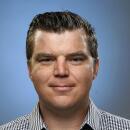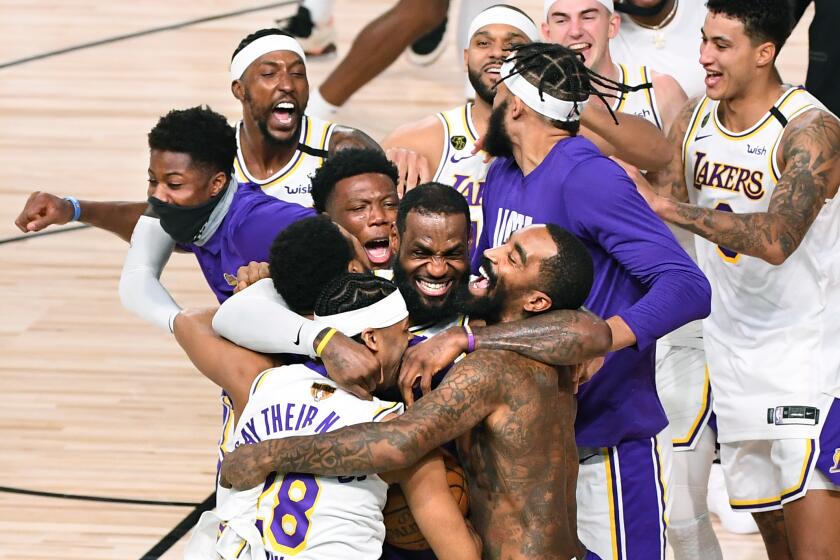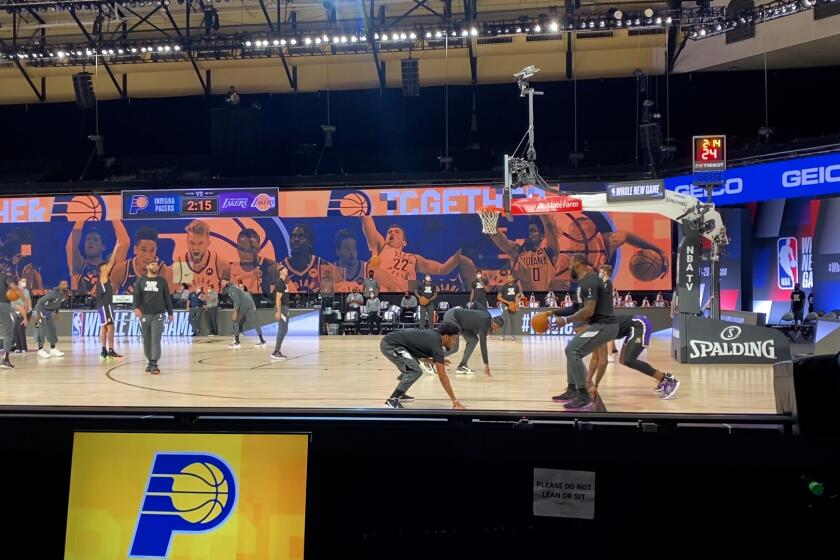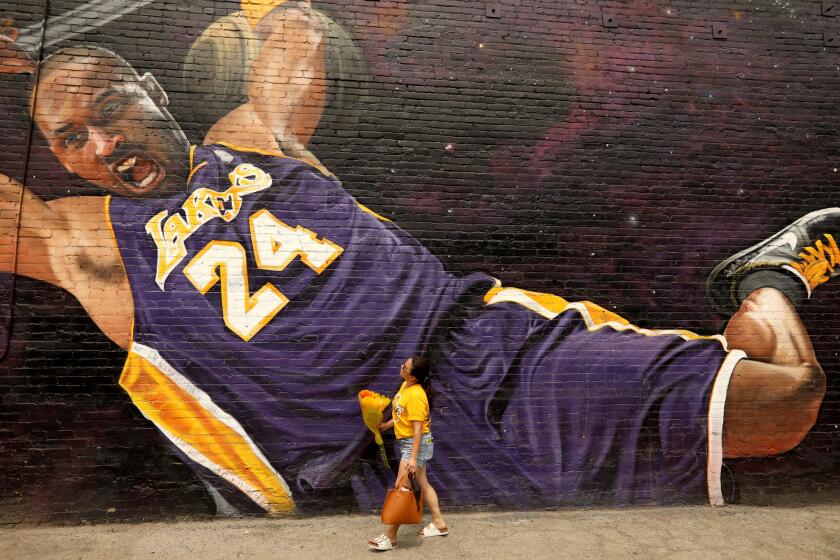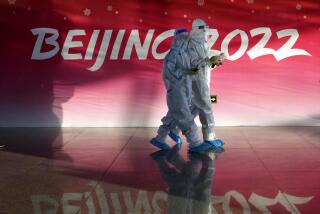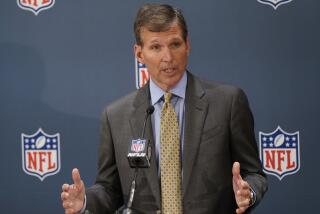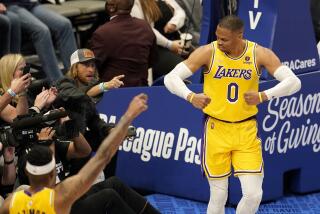How the NBA survived nearly 100 days inside the Orlando, Fla., bubble
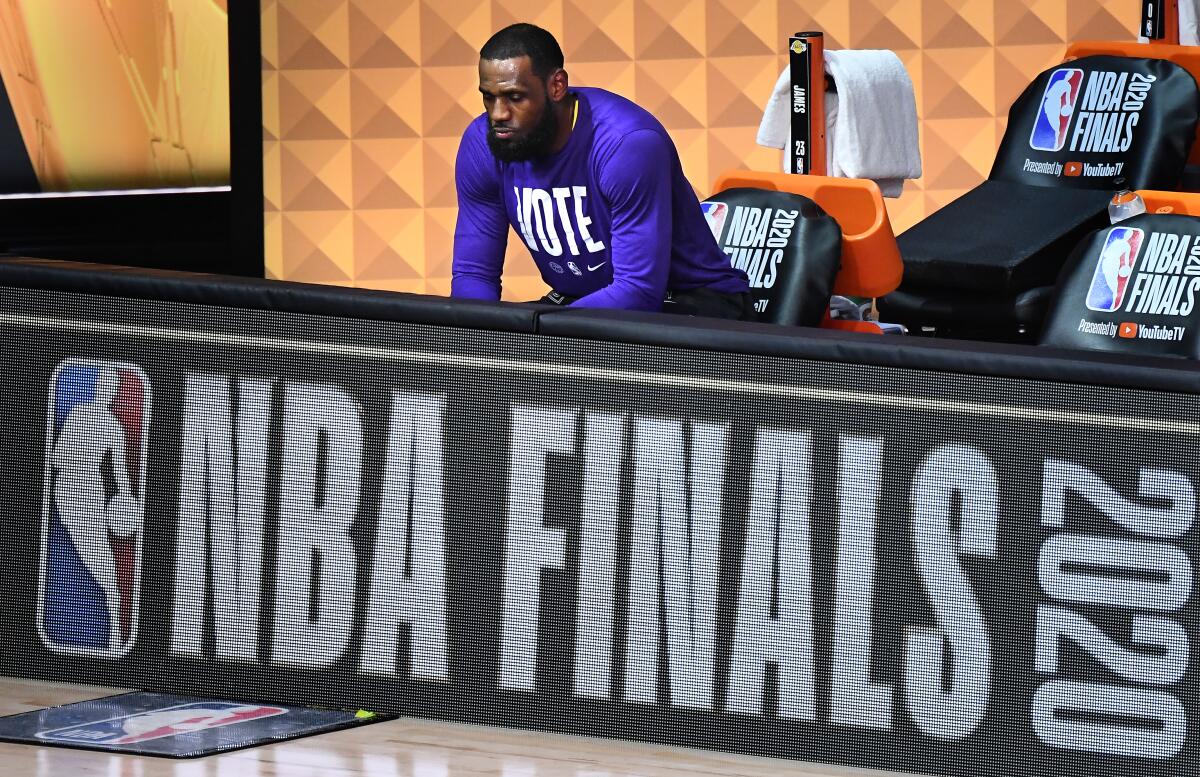
- Share via
ORLANDO, Fla. — It never felt real to LeBron James until the team bus rolled up to the Gran Destino hotel
for the first time in July. Before then, it all seemed so lofty, so unlikely — a plan built on a house of cards that could fall apart with the slightest of breezes.
The plan seemed extreme. The protocols that NBA players agreed to would greatly restrict their movements, force them to wear masks and, for months, separate them from family. There would be daily testing. The details were impressive — the proper recipe to sanitize basketballs, the bags attached to the referee’s whistles to keep spit from dripping out, single-use decks of playing cards.
But all of it could fall apart if one player got sick and infected someone else, who then infected someone else. The NBA had plans to try to avoid an outbreak, but it seemed possible one could bring the season to an end.
Instead, the final chapter went like this: James, cigar smoke billowing around his face, champagne soaking his clothes, was again an NBA champion. The league’s best player on the league’s best team marveled at the finish line he, his teammates, his coaches and his league were able to cross.
Photos from the Lakers’ championship win over the Miami Heat in Game 6 of the NBA Finals.
“We had zero positive tests,” James said before repeating the bubble’s best stat. “We had zero positive tests for as long as we were here, 90-some days, 95 days maybe for myself. I had a little calendar I was checking off. But on a serious note, no positive tests. That’s a success for everybody that was involved.”
The league protected its players while salvaging their season, satisfying TV contracts and helping mitigate some of the losses from the pandemic, the economic toll of which is still ongoing.
But as people left their rooms and turned in their tracking devices that beeped whenever you were within six feet of someone, there was a tremendous sense of accomplishment.
There were behind-the-scenes scares — Commissioner Adam Silver alluded to some employees working within the bubble testing positive. But they never trickled in and disrupted the illusion of safety the NBA’s plan would eventually create.
Inside the bubble, instead of fighting the virus, people could focus on the bigger challenge — fighting off boredom.
Life inside the NBA’s closed environment in Orlando means constant surveillance and medical checks. And sometimes wine. Lots and lots of wine.
No one was more proficient than the league’s referees, who had less and less to do as the playoffs went on.
Some, like Marc Davis, turned to lap swimming, adding one extra trip from wall to wall each time he jumped into the pool. Before Game 5 of the Finals, which he officiated, the number was 74.
“I’ve chosen to embrace this,” Davis said. “I know why I’m here. We’re trying to save our business in the middle of a pandemic.”
Zach Zarba loved the pool too — he might’ve been the most socially fluent person in the bubble bouncing from one group of people to another. But he also spent time each week in his room taking language lessons, a tutor speaking to him in Italian so he could become conversational in the language his father grew up speaking.
And then there was pickleball, the tennis/ping-pong hybrid that dominated the courtyard in the center of campus. Veteran official Scott Foster sold the sport to anyone with even an ounce of interest, and on sunny days in between Finals games, people would be on the courts from 9 a.m. to 9 p.m.
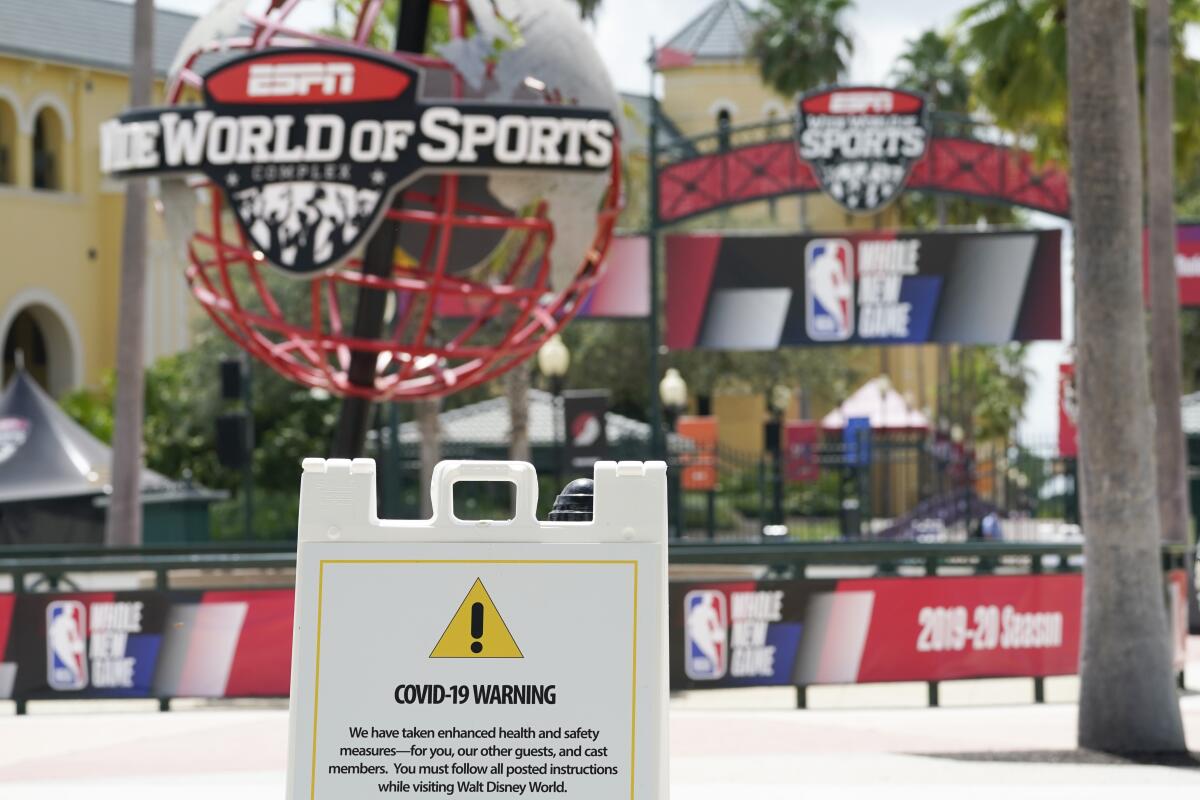
The people who made the most of the experience embraced its uniqueness. The league’s best officials are typically spread throughout the nation in different crews, traveling mostly alone. In the bubble, they worked together, blew off steam together and, despite an array of political views, worked through discussions of how to join in the fight against injustice.
“Here, we have each other,” Davis said.
There’s little doubt that the people who went through the experience will be connected, a shared experience unlike any other in NBA history.
The Lakers’ latest championship team features LeBron James and Anthony Davis. But the biggest star was the memory of Kobe Bryant.
“We can’t thank the NBA enough for this whole experience. This has just been extraordinary, this bubble, this campus, the safety protocols and just the organization of everything,” Miami coach Erik Spoelstra said. “To be able to be a part of something historic like this to continue our season, we feel so honored and grateful that we were able to be a part of this.”
While Lakers players celebrated at the Three Bridges restaurant that had become their unofficial home during the bubble, NBA employees, media, referees and other staff gathered in the hotel parking lot for their own victory party. Like James, they had made it to the finish line.
And that was worth a toast too.
More to Read
All things Lakers, all the time.
Get all the Lakers news you need in Dan Woike's weekly newsletter.
You may occasionally receive promotional content from the Los Angeles Times.
